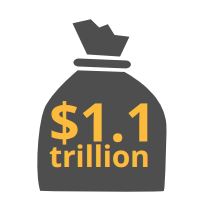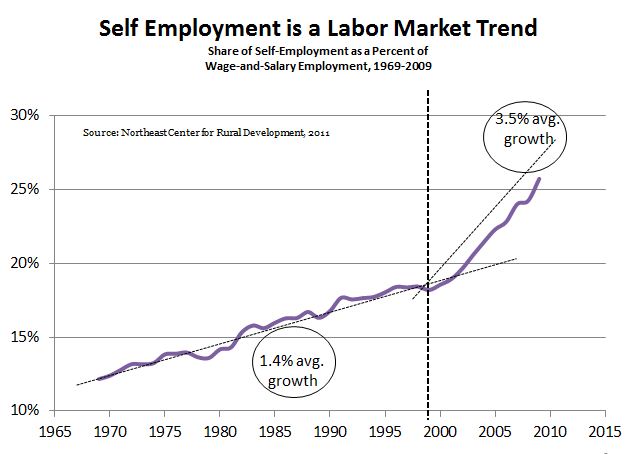Self-employment is a workforce issue
 According to The State of Independence report, a “conscious structural shift and recognition of a new model of work and engagement” toward self-employment is occurring. The number of independent workers grew from 15.9 million in 2011 to 17.9 million in 2014; a 12.5% growth rate that is much faster than the 1.1% growth rate of the labor force. Self-employment is a labor market trend with big economic impacts, generating $1.1 trillion in economic activity much of it local.
According to The State of Independence report, a “conscious structural shift and recognition of a new model of work and engagement” toward self-employment is occurring. The number of independent workers grew from 15.9 million in 2011 to 17.9 million in 2014; a 12.5% growth rate that is much faster than the 1.1% growth rate of the labor force. Self-employment is a labor market trend with big economic impacts, generating $1.1 trillion in economic activity much of it local.
Self-employment was more than 25% of wage and salary employment in 2009. Pre-2000, self-employment grew at an average of 1.4% a year; post-2000, self-employment grew at an average of 3.5% a year (see graph).
- Joel Kotkin writes in Rise of the 1099 Economy that the number of people who primarily work on their own has swelled by 1.3 million since 2001.
- We used to call it “Free Agent Nation.” Now, it seems like the new term of art will be “The 1099 Economy.” While the names may change, they all point to a phenomenon of rising importance: the growing number of Americans who don’t have a “regular job” but instead work on individual contracts with employers or customers – From Living and Working in the a 1099 Economy by Erik Pages.
- According to the Small Business Administration, small businesses create 64 percent of all new U.S. jobs.
What Can Be Done?
Traditional methods of economic development aren’t creating the jobs we need for local economies to thrive. CAMEO is working to promote self-employment as a job creation strategy that works for cities and states by the following:
- Incorporate self-employment into the Workforce system and encouraging members to work with WIBs.
- Grow microlending through economies of scale and lower costs.

